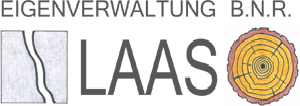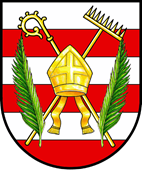Lasa/Laas Hauptort and Trodena are the selected case studies in South Tyrol. In addition to national laws, the regulation of collective properties in South Tyrol is completed and enriched by the local law n.16 of 16th July 1980, that states that collective territories in a given area are usually administered by a committee composed of five members. However, if there is no such committee, collective properties are managed directly by the Municipal Council. The case studies have been firstly selected to represent the two different circumstances: Lasa has a committee of five members, Trodena has instead the Municipal Council as administrator of COs, with the Mayor of the city as President. Moreover, the two case studies have been chosen according to the difference in their territorial extension. Lasa is characterized by a relative large extension in the region, with several collective properties under the control of the committee. Trodena has instead a smaller extension and this fact could allow to assess whether the management of collective properties assumes the same intensity and importance even in a smaller territory. The two specific institutions have also been selected according to other reasons. For instance, Lasa distinguishes itself among the separate administrations of COs in South Tyrol due to its pure white marble extraction activity from the local quarry, an activity that has important economic and environmental repercussions on the territory and therefore it is carefully monitored by the committee. Moreover, the president of the Lasa committee is also the president of the newly established association for collective properties administrations in South Tyrol. Eventually, with concern to the second case study, it is of importance to underline that Trodena is located on the border with Trentino: it could be possible to determine whether or not this has influenced the management of collective properties.

Lasa/Laas Hauptort is a municipality located in the west of South Tyrol. It has a territorial extension of more than 110km² – mostly natural areas – and a population of 4,099 inhabitants mainly belonging to the German speaking group (98.09%). The institution managing COs in Lasa is a public body known as “ASBUC, Amministrazione Separata dei Beni di Uso Civico”, which has its origins in the Middle Ages. It has a committee composed of five members, including the President, that owns and manages local woods, pastures and mountain pastures to assure inhabitants’ rights of grazing and having wood from the local forest at a discounted price.
Moreover, the committee monitors the marble extraction activity from the local quarry. As mentioned in the previous paragraph, Lasa is known for the pure white marble quarried in the mountains south of the town which has been used in buildings worldwide and by artists from several countries. The quarry is therefore important to control, also due to the environmental impact of its marble extraction. Eventually, the ASBUC manages two mountain huts, a horse stable and protects a local biotope.

Trodena is located in the South of the Bolzano Province, on the border with Trentino. It has an area of 20.56km² and 1,056 inhabitants belonging to three different linguistic groups: German, Italian and Ladin. COs in Trodena are managed by the Municipal Council, as no committee has been established in the area.
This institution is composed of five members, including the Mayor of the city as President, and a secretary. It controls, protects and manage mainly three types of collective ownerships: pastures and lands that are mostly used for grazing local farmers’ animals, forests, and a mountain hut that welcome several tourists each year. Concerning forests, the administration of collective ownerships in Trodena controls 719 hectares that have the main function of providing wood to the municipality, but are also of importance for the local fauna preservation.
